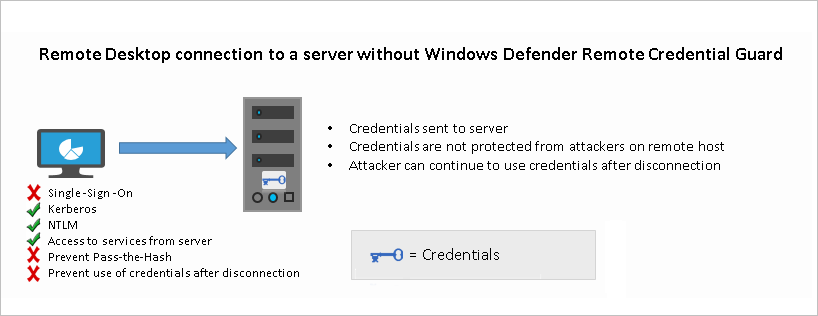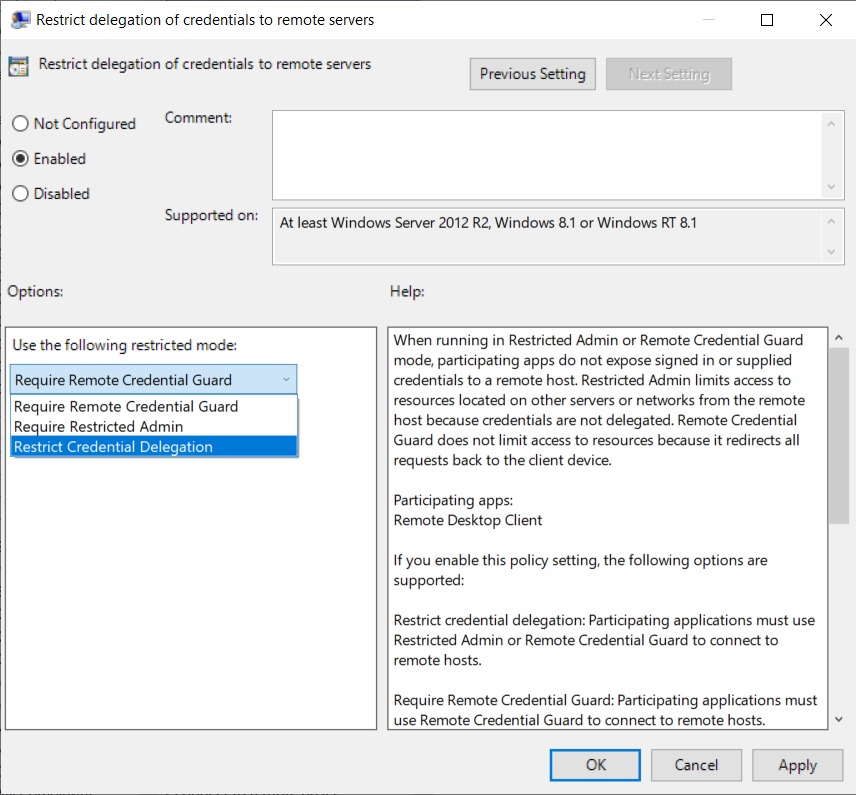

- #Windows server 2016 remote desktop save password how to#
- #Windows server 2016 remote desktop save password install#
- #Windows server 2016 remote desktop save password password#
- #Windows server 2016 remote desktop save password windows#
On the General tab, type a new First name and Last name for the user account, and then click OK.

In the list of user accounts, select the user account that you want to change. To change the display name for a user account Changing the display name does not change the logon or sign-in name for a user account. The display name is the name that appears in the Name column on the Users page of the Dashboard. To save any changes that you make to the user account properties, click Apply. The Properties page for the user account appears.Ĭlick a tab to display the properties for that account feature. In the Tasks pane, click View the account properties. In the list of user accounts, select the account for which you want to view or change properties. To view or change properties for a user account The Dashboard displays a current list of user accounts. The list also provides additional information about each account.

#Windows server 2016 remote desktop save password windows#
The Users section of the Windows Server Essentials Dashboard displays a list of network user accounts. If you have an integrated email provider, the email account assigned to the user account will also be removed. If you chose to delete the files, the server permanently deletes the user's folder from the Users server folder and from the File History Backups server folder. After making your selection, click Next.Īfter you remove a user account, the account no longer appears in the list of user accounts. To keep the user's files, leave the check box empty. On the Do you want to keep the files? page of the wizard, you can choose to delete the user's files, including File History backups and the redirected folder for the user account. The Delete a User Account Wizard appears. In the Tasks pane, click Remove the user account. In the list of user accounts, select the user account that you want to remove. For more information, see Manage Online Accounts for Users. If you want to retain user data for the online account, deactivate the user account instead of removing it. If a user account has a Microsoft online account assigned, when you remove the user account, the online account also is removed from Microsoft Online Services, and the user's data, including email, is subject to data retention policies in Microsoft Online Services. If you do not want to permanently remove the user account, you can deactivate the user account instead to suspend access to network resources. As an option, you can also delete the files for the user account at the same time that you remove the account. Because of this, you can no longer use the account to log on to the network or to access any of the network resources. When you choose to remove a user account from the server, a wizard deletes the selected account. The Add a User Account Wizard appears.įollow the instructions to complete the wizard. In the Users Tasks pane, click Add a user account. Open the Windows Server Essentials Dashboard.
#Windows server 2016 remote desktop save password install#
#Windows server 2016 remote desktop save password password#
Provide a name and password for the user account.ĭefine the account as either an administrator or as a standard user. Windows Server Essentials includes the Add a User Account Wizard that helps you: When you add a user account, the assigned user can log on to the network, and you can give the user permission to access network resources such as shared folders and the Remote Web Access site.
#Windows server 2016 remote desktop save password how to#
The following topics provide information about how to use the Windows Server Essentials Dashboard to manage the user accounts on the server:Ĭhange the display name for the user account For an overview of the Users Dashboard, see Dashboard Overview.

The Users page of the Windows Server Essentials Dashboard centralizes information and tasks that help you manage the user accounts on your small business network. Applies To: Windows Server 2016 Essentials, Windows Server 2012 R2 Essentials, Windows Server 2012 Essentials


 0 kommentar(er)
0 kommentar(er)
